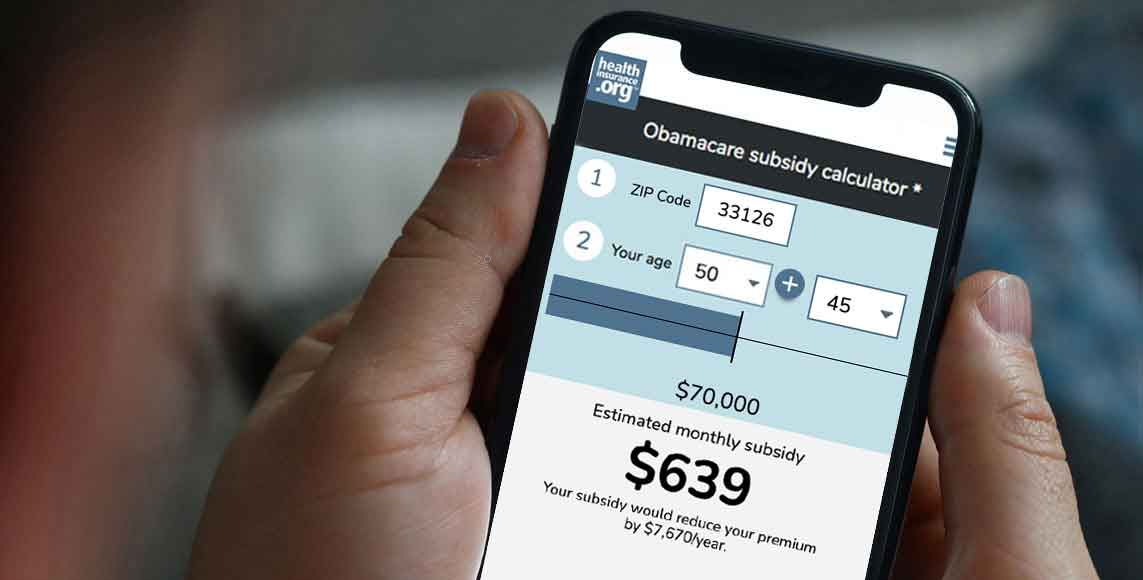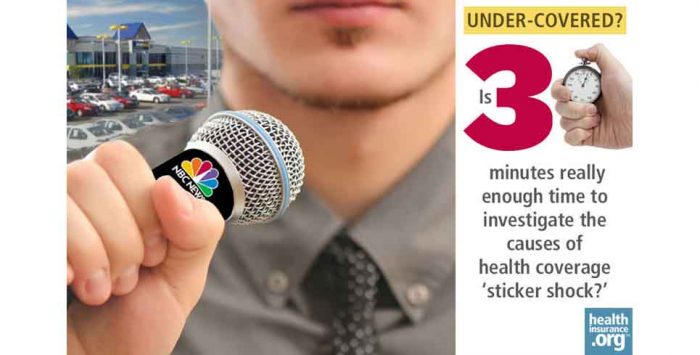For months, critics of the Affordable Care Act have been flooding the media with stories about how the health reform law intrudes on the lives of Americans. Some media reports have described how the cancellations of policies that don’t meet the minimum standards set by the ACA have been “stealing” coverage that policyholders believe to be adequate and affordable.
Many of those reports have been dissected and – in many cases, investigation has revealed that the health coverage individuals lost bears no close resemblance to the comprehensive ACA-mandated coverage that replaced those policies. In many cases, the investigations revealed that not only would these individual policyholders have access to better coverage, but that the coverage would be less expensive, thanks to ACA’s subsidies.
With these “horror stories” about individual policies, Americans have been hearing more stories about the dangers Obamacare poses to small businesses – and to the employees of those businesses. Critics of the law again charge that the ACA is forcing businesses to cancel their group policies and that employees then have no choice but to seek coverage that’s ends up being more expensive.
But once again, Americans aren’t getting the whole story.
One recent nationally televised news report offers a perfect illustration of media coverage that is giving viewers at best an incomplete look at the effects of health reform on small businesses. A closer look at the coverage reveals that what’s happening is NOT an indictment of health reform.
In fact, the story reveals a growing trend that further reinforces the idea that health reform is truly needed by small businesses that have been – long before the arrival of the ACA – forced to “think outside of the box” to combat rising health costs and provide affordable, quality coverage to employees.
National reporting of small-town ‘drama’
In December, a NBC News television segment focused on drama unfolding at Extreme Dodge, a car dealership in Jackson, Michigan. In that three-minute segment, reporter Lisa Myers explained how the dealership’s 41 employees were “learning about trade-offs as they come face to face with the new realities of health care.”
If you guessed the employees were unhappy about what they faced, you’ve guessed right. “I feel like I’ve been taken to the cleaners,” said Neal Campbell, a salesman for the dealership.
Myers explained that the health coverage employees had through Extreme Dodge “was cancelled because it doesn’t comply with the Affordable Care Act, better known as Obamacare.”
In fact, what the CEO of Extreme Dodge had decided to do was make a fundamental shift in the way his company offered coverage to its workers. As Myers stated, “Rather than officially sponsor a new policy [for 2014], the company will instead provide it’s employees with $2,400 apiece to buy their own coverage…”
That $2,400, according to Myers, “is a little bit more than the company says it spent on health insurance [in 2013]. Dealership owner Wesley Lutz said his decision to go in a new direction was driven by the fact that health insurance is ‘incredibly expensive’ and getting more so. He said he needs to be able to control his future costs.”
As a result of Lutz’s new approach to providing coverage, employees were forced to seek coverage on their own – some through HealthCare.gov, some through the private insurance market. As Myers concluded (in her introduction), “Most did not like what they see.”
The interviews that then followed featured employees who met with a broker to determine whether they would fare better or worse with coverage they found elsewhere. There were, as Myers noted, “a handful of winners,” but others – who would get coverage through a new group plan – faced much higher costs in the form of deductibles.
What a 3-minute TV segment didn’t show
One of the problems with TV news is that reporters usually only have about three minutes to tell their story, which means that a lot of facts and important details are frequently not included.
Myers said Lutz had to change his employees’ coverage because the previous plan didn’t comply with the Affordable Care Act. But we are left wondering why.
Was it because it didn’t provide coverage for preventive care? or because it didn’t meet the requirement that insurers must now devote at least 80 percent of our premium dollars to our medical care instead of overhead and profits?
Or was it because it had annual and/or lifetime caps on what Extreme Dodge’s insurance company would pay out following a serious illness or injury? Were there “essential benefits” not covered under the old policy?
All we can surmise is that it fell short of the ACA’s minimum standards in some unexplained way.
How much coverage did employees lose?
That $2,400 that Extreme Dodge is now giving to each employee to buy insurance seemed awfully low to me. It got me to wondering just how generous that car dealership has been in the past and how good of a deal the old insurance coverage really had been.
What I found? When you compare $2,400 to what the average American employer contributed last year to employee health coverage, Extreme Dodge is on the extreme low end.
Every year, the Kaiser Family Foundation conducts a survey to find out how much employer-sponsored health insurance actually costs in this country. As you can imagine, it’s been going up every year, often by double digits.
Between 1999 and 2009 – the decade before the ACA was signed into law – the cost of employer-sponsored family coverage increased 113 percent. By 2013, the average annual premium had risen to $5,884 for single coverage and $16,351 for family coverage.
The NBC report didn’t mention those figures or explain how Extreme Dodge was able to provide coverage at far less than half the cost of the average policy for even a single employee, much less a family. To find out, I called the company’s general manager, Marc Trudell, who told me that the old policy was a high-deductible plan associated with a health savings account (HSA).
Trudell said that while Extreme Dodge contributed some money to each employee’s HSA, it was largely up to the employees to fund their own HSAs. The trade-off you get with an extremely low-premium policy is a policy with pretty high out-of-pocket obligations.
High-deductible plans with HSAs are great for some people, especially young people who don’t get sick or hurt – people who don’t need to use their insurance, in other words. And they’re fine for people who have pretty high incomes and who won’t have to worry about bankruptcy or losing their homes if they wind up in the hospital. But all too often those types of plans are anything but a good deal for low- and middle-income folks who have the misfortune of getting seriously sick or badly injured.
Another thing Trudell told me is that Extreme Dodge has never offered subsidized family coverage. The company only pays for coverage for its employees (not for any spouses or dependents). So every Extreme Dodge worker with a wife and kids – or a husband and kids – has always had to pay the entire amount of the premium for the rest of his or her family.
An even bigger story
Another detail left out of the NBC report was that Extreme Dodge had decided to join a trend in employer-sponsored health insurance that began long before the ACA was enacted. It’s the trend of employers moving away from what is known in the insurance world as a defined-benefit employee health insurance strategy and to what human resources executives refer to as a defined-contribution strategy.
The move is popular among employers because it enables them to incrementally shift more and more of the cost of both health insurance and health care from them to their workers.
What does that mean to Extreme Dodge’s employees? By shifting to a defined contribution strategy, the company’s workers will likely have to pay ever-increasing portions of their premiums unless Extreme Dodge is willing to increase the annual amount of money it provides workers for health insurance to keep up with premium inflation.
This is a trend that will impact tens of millions of us who get insurance through our employers, both large and small. The trend is well underway, but chances are you’ve never heard of it unless you read publications – like Business Insurance and Human Resource Executive Magazine – that your company’s benefit managers read.
And it is a trend that many employers will like because it will enable them to pay a smaller percentage of your coverage over time while you pay more.
Not a new trend
Extreme Dodge’s shift in strategy is akin to the same one employers embarked on several years ago when they replaced their company-funded employee pension plans with 401(k)s. In a traditional pension plan, which few companies still offer, employers pay the entire amount of the benefit. That proved to be unsustainable as the number of retirees swelled and life expectancy increased.
Employers began replacing their pension plans with 401(k)s in the late 1970s when Congress passed legislation making them lawful. This enabled them to shift more of the responsibility of saving for retirement from them to their employees. In a 401(k), workers can set aside a portion of each paycheck for retirement, up to an annual maximum, and their employers can match some or all of their workers’ contributions. Taxes are deferred until the worker begins to withdraw money after retirement. This arrangement gives employers much more control over their employee retirement benefits.
This shift from a defined-benefit to a defined-contribution approach has enabled U.S. employers to save billions if not trillions of dollars that they would have been obligated to pay their retirees under their old pension plans.
Not a symptom of health reform
Long before lawmakers wrote the first word of the Affordable Care Act, many companies began doing the same thing with employee health benefits. That’s what Extreme Dodge has done.
The shift represents an acknowledgement among many employers that health insurers have not been able control their health care spending as much as insurers once assured employers they could do by using the techniques of managed care.
While there have been predictions from critics of the Affordable Care Act that the law will force employers to think twice about continuing health coverage for their workers, this trend – along with tax credits and other incentives in the law to encourage small employers to provide health insurance – likely will mean that more, not fewer, businesses will offer coverage in one form or another. Chances are, though, that in the years ahead, our employers will be less generous in subsidizing our premiums.
The rise of private exchanges
To facilitate this trend from defined-benefit to defined-contribution health care coverage, big consulting firms that advise companies on employee benefits have created private health exchanges that are similar in many ways to the Obamacare public exchanges.
And some of the nation’s biggest employers – including Walgreens and Sears – already have made the shift. Employees of those companies and many others are now doing exactly what employees of Extreme Dodge are doing: they’re taking the money their employers have set aside for health insurance and going to the private exchanges to purchase their coverage.
Last week, Bloomberg News reported that a third of U.S. employers are saying they plan to move their workers’ health care coverage to private exchanges in the coming years. The story was based on a survey of employers by Aon Hewitt, one of the countries largest benefit-consulting firms.
“Employers are telling us they are losing confidence in their traditional approaches, like vendor changes (switching from Aetna to Blue Cross, for example) or employee cost-sharing,” which only deliver “incremental” improvement, Bloomberg quoted Jim Winkler, Aon’s chief innovation officer, as saying. “Employers are saying, ‘I need to do something different.”
Aon’s private exchange already serves 600,000 employees of 18 large U.S. companies, including Sears, Walgreens and Darden Restaurants. Private exchanges are also being operated by other big consulting firms such as Buck Consultants, Corporate Synergies, Mercer and Towers Watson.
Is the trend a good thing?
On one hand, this can be a good thing for workers. In the traditional defined-benefit approach, an employer typically only offers one insurer’s (vendor’s) health plans. In a private exchange, multiple insurers compete for shoppers’ business. Aon says more than 20 insurers are participating in its private exchange this year.
Theoretically, this competition should benefit consumers and help keep premiums in check. (It’s worth noting, though, that some insurance companies, including Aetna and UnitedHealthcare, are setting up their own private exchanges and will offer only their own health plans. Don’t expect to see UnitedHealthcare plans offered on an Aetna private exchange.)
On the down side for consumers is the concern that the amount of money employers make available to their workers each year will not keep up with increases in premiums and medical inflation, meaning that workers over time may be paying considerably more on a percentage basis for health insurance and health care than they are today.
It’s also important to point out that unlike the exchanges being operated by state and federal governments, the private exchanges are not able to offer tax credits to bring down the cost of premiums.
The public exchanges were created to serve people who can’t get coverage through an employer. (Small employers can also use the public exchanges to shop for coverage for their workers.) Most of the individuals who are eligible to buy coverage through a public exchange are either currently unemployed or work for employers that don’t offer benefits.
But even if you do work for a large company that offers coverage, odds are increasing every year that, like the employees at Extreme Dodge, you will be among millions of other Americans who are being moved into the new world of defined-contribution health care. And you very possibly will shopping for coverage on an exchange of one type or another as employers continue to explore new health insurance strategies for their workers.
Wendell Potter is the co-author of Nation on The Take: How Big Money Corrupts our Democracy and founder of Tarbell, an independent, nonprofit multimedia journalism platform dedicated to investigating the powerful forces that influence public policy.








